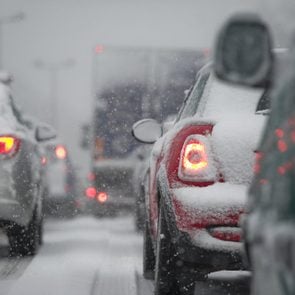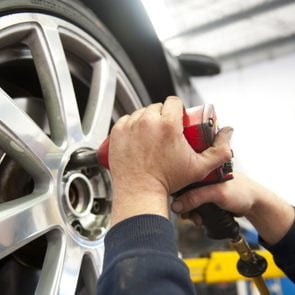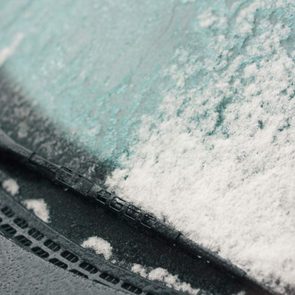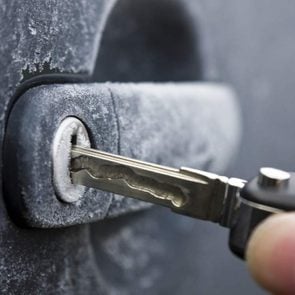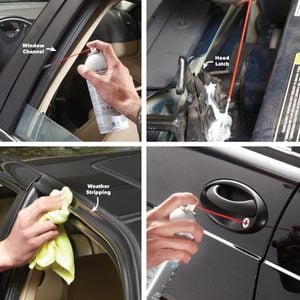No matter how many Canadian winters you’ve got under your belt, it never hurts to review the winter driving safety guidelines before another season of white-outs and slick, ice-covered roads. Here are 15 winter driving safety tips recommended by the auto experts at NAPA Canada:
- Don’t drive in winter until all snow and ice is cleared off your windows, side mirrors, headlights, taillights and license plates. (You might consider these headlight upgrades for better visibility.)
- Before you head into winter traffic, make sure that your windshield wipers are not frozen to your windshield.
- Keep your windshield washer fluid tank full. (Here’s how to check your windshield wiper fluid level.)
- It’s important to allow the oil to flow before taking off in cold weather, so start your car and let it warm up for a minute or two. This will ease wear on your engine and other mechanical components.
- Check the tread on your tires regularly for uneven or extreme wear. (Find out when is the right time to change to winter tires.)
- Keep at least a half-tank of gas in your vehicle. If you become stranded in extreme conditions, the extra fuel can keep you nice and warm.
- Whenever you run your car to keep warm in the cold weather, make sure you keep a window cracked to prevent carbon monoxide from building up. If you can, free the exhaust pipe from any snow to further reduce the carbon monoxide risk.
- Take care when parking in snow. A blocked tailpipe could lead to carbon monoxide poisoning.
- Keep an extra hat and pair of gloves in your car for unexpected weather changes. (Here are more ways to stay warm in a car that has no heat.)
- Pack a winter survival kit for your trunk, including a blanket, emergency flashlight, and non-perishable foods like candy bars or crackers.
- In case of a snow emergency, keep a shovel, an extra pair of windshield wiper blades, snow brush and ice scraper handy. (Find out why you need to keep a nail file in your car this winter.)
- If you are heading into a skid or slip, remember to keep your foot off the brake and the accelerator.
- When stuck in ice or snow, try using your floor mats to gain extra traction under your tires. (A carpet remnant also works well!)
- If you hit a patch of ice and start to slide, take your foot off of the gas pedal. Do not use your brake. Do not jerk the steering wheel. Instead, turn your car towards the skid.
- If the road conditions are icy or snowy, don’t panic! Because people tend to over-steer, it’s important to drive slowly.
For more great tips on how to maintain your car and to find the parts you need, visit NAPA Canada.
Now that you know these winter driving safety tips, find out 20+ things you must do to get your car ready for winter.
Why pipes burst
When water freezes, it expands in volume by about nine percent. And it expands with tremendous force: The pressure inside pipes may go from 40 pounds per square inch to 40,000 pounds per square inch! No pipe can hold that much pressure, so it breaks open. The break may occur where the ice forms, but more often, it occurs where water pressure finds a weak spot in the pipe. That may be inches or even feet from the frozen area. (Avoid these toilet paper alternatives that will definitely clog your pipes.)
Let the water run
A tiny trickle from faucets protects pipes in two ways. First, it prevents pressure from building up inside pipes. Second, it creates a constant flow of water through pipes and that makes freezing much less likely.
Temporary steps to thaw frozen pipes
The first sign of ice forming in pipes is reduced flow at faucets. So if the flow slows to trickle during a cold snap, or if you suspect your pipes are vulnerable, take action. Here are a few things you can do:
- Turn up the heat. (Find out the best temperature for a house in the winter.)
- Set up fans to blow heat into cold rooms.
- Open vanity or cabinet doors so warm air can reach the pipes under sinks.
- If you have exposed pipes inside closets or pantries, leave doors open.
- Disconnect garden hoses from outdoor faucets. Even “frost-proof” faucets can burst if a hose is connected.
- Keep the garage door closed. (This genius hack will defrost your windshield fast.)
- If you have reduced water flow, heat the most vulnerable pipes (usually in basements and crawl spaces or near exterior walls) with a hairdryer. Leave the faucet on while you apply heat. As you melt ice, the flow will increase.
Permanent protection
Long-term freeze prevention is usually a major project, like insulating a crawl space, replacing standard outdoor faucets with frost-proof models, or even rerouting pipes away from cold spots inside the home. Start by calling in a professional plumber to assess your situation and make recommendations. (Here are the things pro plumbers never do in their own homes.)
Heat the pipe
Electric heat cable is good protection during cold spells. A thermostat switches on the heat only when the temperature drops, so heat cable won’t waste electricity when it isn’t needed. But if you need to protect lots of pipes for long periods, heat cable is an expensive solution.
Next, check out 100 home improvement hacks you’ll wish you knew sooner.
